You Hate Hearing It, We Hate Saying It
Every architect or designer has felt the pain of late deliveries, and we know you hate hearing the following from us:
Unfortunately, that laminate is not in stock and it will take an extra four weeks, on top of the regular lead time, to get the cabinets to you.
As we’ve discussed in some of our other blogs, getting casework installed on time is very important. Punctuality is one of the more consistent and major challenges that exist for cabinet installations. The timing is paramount, but it rarely gets the forethought and attention that it needs.
What Factors Influence Build Time?
Let’s pull back the curtain a little and take a look at the inner workings of cabinet manufacturing.
TMI is our laminate manufacturer and their minimum lead time is 8-12 weeks from the week of fabrication release. This lead time works when all of the raw material purchasing conforms to the lead time parameters. In other words, if all the materials are in-stock and ready, you can expect cabinet delivery 12 weeks from the point of fabrication release, unless you’d like delivery at a later date.
Here’s the catch. The majority of raw materials that go into this kind of casework are readily available. At the same time, there are 3 specific casework components that are not always available from the manufacturers. These 3 components also happen to be the most visible aspects of the casework and are the most likely to be customized by the buyer.
#1: Laminate
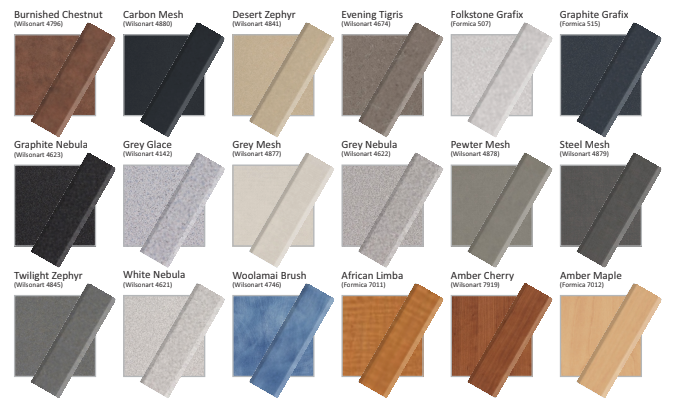
Laminates are the visible and protective skin for your cabinets and are selected for the job from the hundreds of choices showcased by multiple laminate providers. The issue is that not all these laminate companies can deliver the color you’ve chosen in the quantity needed when the job is ready for production.
For example, an architect selects a laminate color that is not in inventory and can’t be delivered as originally promised. This puts the brakes on production of the order at TMI and the job has to wait until the laminate arrives.
Sometimes the problem isn’t availability but cost. There are some laminates that are a few pennies more than the average per square foot, and others that are dramatically more expensive and skyrocket the overall cost of the job.
So how do you know which are which? The above images are a few examples of the laminate surfaces available as a part of TMI’s Vendor Stock program. TMI curates this collection of laminates from multiple providers to ensure all the surfaces included in the Vendor Stock program are going to be available within the time-frame that you would normally expect. There will be no lead-time or cost surprises when dealing with ordering surfaces that fall in this program.
You can see the read the full list of stocked laminates here.
The TMI Vendor Stock Surfaces Program is the most extensive and complete color offering available in the laminate casework industry. It includes 92 non-premium laminate selections from Wilsonart and Formica, with PVC edgebanding matches in 1mm and 3mm thickness. All available without additional costs or extended lead times.
#2: PVC Edgebanding
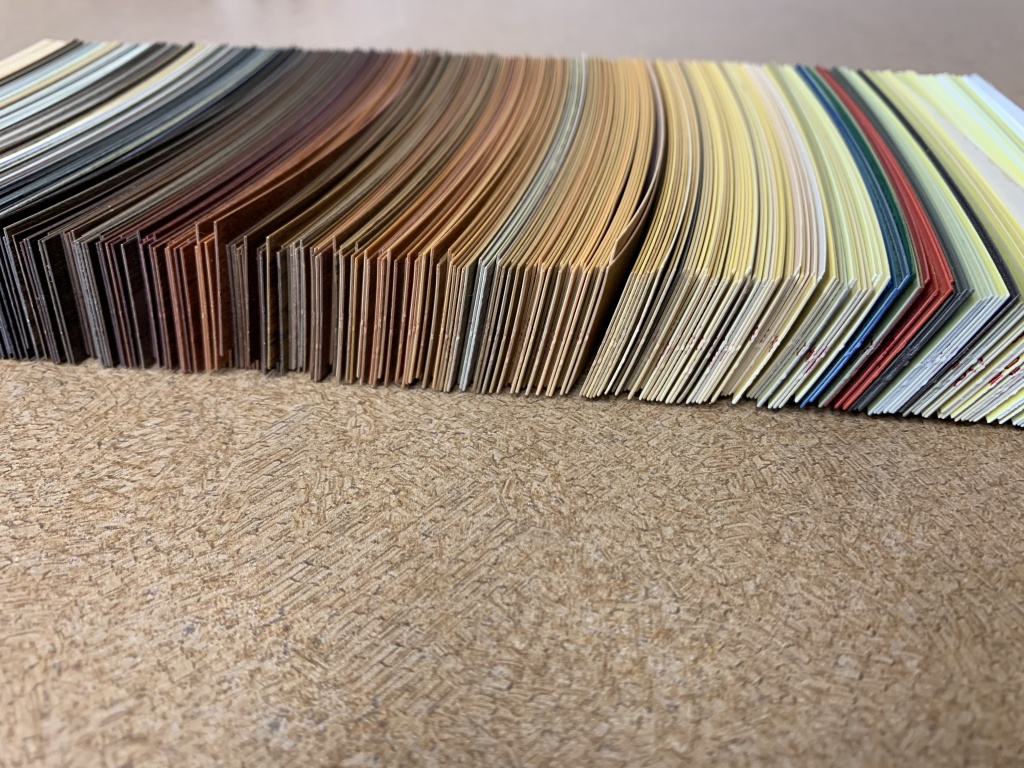
Thin PVC edgebanding is used for the exposed edges on the cabinet frame itself. As the cabinet door closes, it rests on the 1mm PVC edgebanding.
1mm PVC edgebanding is used for the lining on the sides of the cabinet doors, like you can see below.
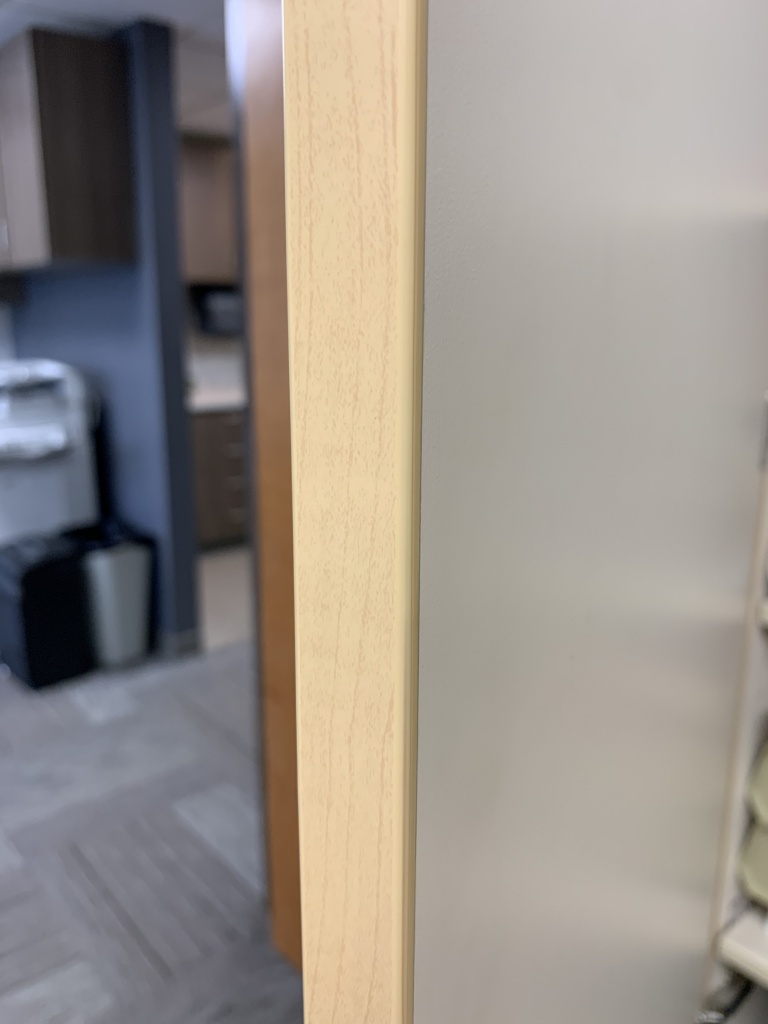
3mm PVC edgebanding is used for the stop on the cabinet frame itself. As the cabinet door closes, it rests on the 3mm PVC edgebanding.
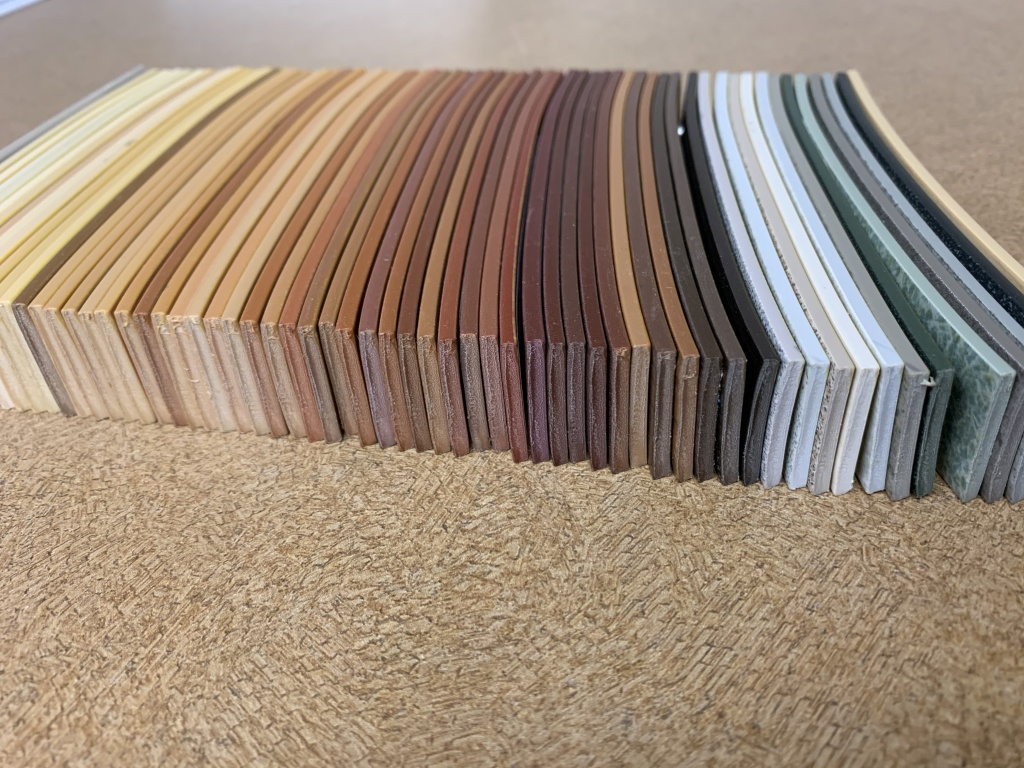
Most often, architects and designers specify that the PVC edgebanding (at cabinet door edges) should match the laminate color and pattern, but not everybody knows the edgebanding is made by different manufacturers (like Rehau or Doellken Woodtape) than the laminate (Formica, Wilsonart, etc).
There is an additional factor to keep in mind. The more popular colors and patterns have plenty of supply on hand, but the less common ones are only produced as-needed and have minimum order quantities. This is called a production run and can add to lead time and increase project cost – at bid time, if identified – or after contract award. Talk about an unpleasant surprise to have to share with your client.
Ready for one more problem? Sometimes a PVC selection may appear to be perfect match for your woodgrain or patterned laminate, but what you may not know is it doesn’t come in the right width to cover a 1” thick shelf or 1 ¼” countertop. Just because it is on a selector chain doesn’t mean it is available for all circumstances.
****TMI has assembled programs for Laminate and PVC edgebanding to assist with defining the colors that are stocked and readily available.
This allows TMI to efficiently and confidently provide casework within their committed timelines at the most competitive price.
Matching the PVC edgebanding is critical for the casework aesthetic. This is where timing considerations are particularly important. You may find that the laminate you selected is in stock and available within your time-frame. It may turn out, however, that the matching PVC is not in stock and will require a few additional weeks that bumps your project out of its critical production slot.
Additionally, if there isn’t a stocked match of PVC to the laminate, sometimes it can be made custom. But in those cases you’ll have to buy a minimum amount of footage—you may only need 600 feet, but you’ll have to buy 7,000 feet. Other times there is no match at all.
It is much better to know ahead of time that your PVC will match your laminate and that both will be in stock and available within the same time-frame.
You can see all available PVC in the Vendor Stock program here.
#3: Cabinet Pulls
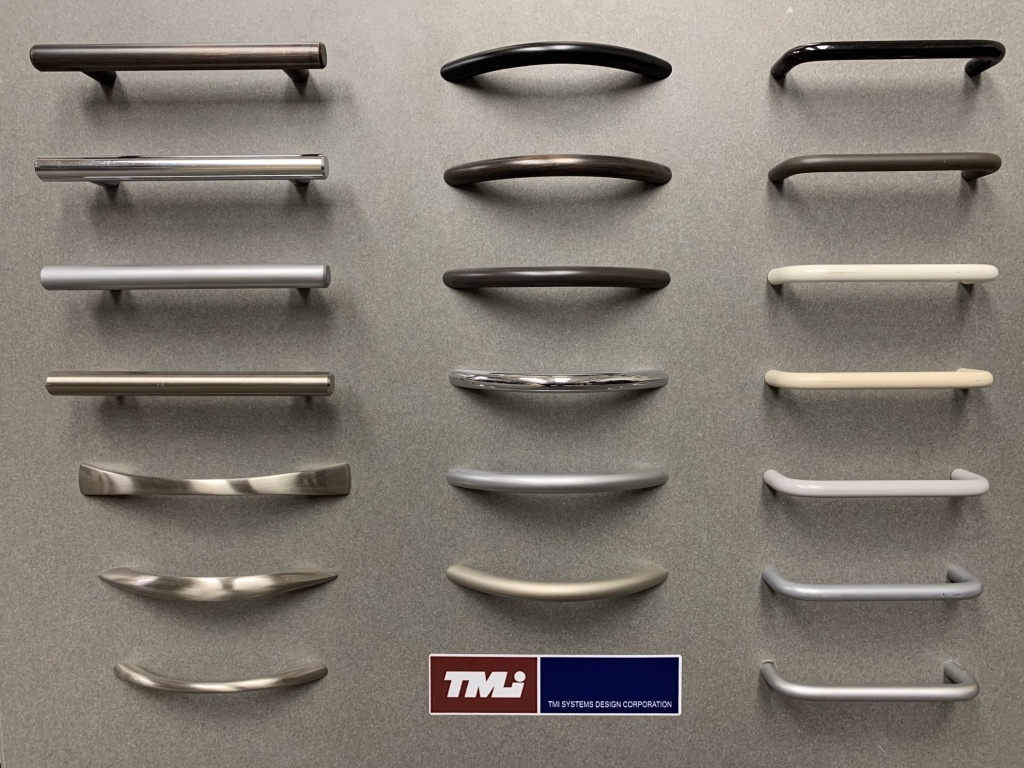
TMI has also negotiated a group of vendor stocked cabinet pulls that give the designers a variety of options all at the same price point. This allows designers to fit any design aesthetic, but still fall within the parameters of the Vendor Stock program to make sure they’re meeting timelines.
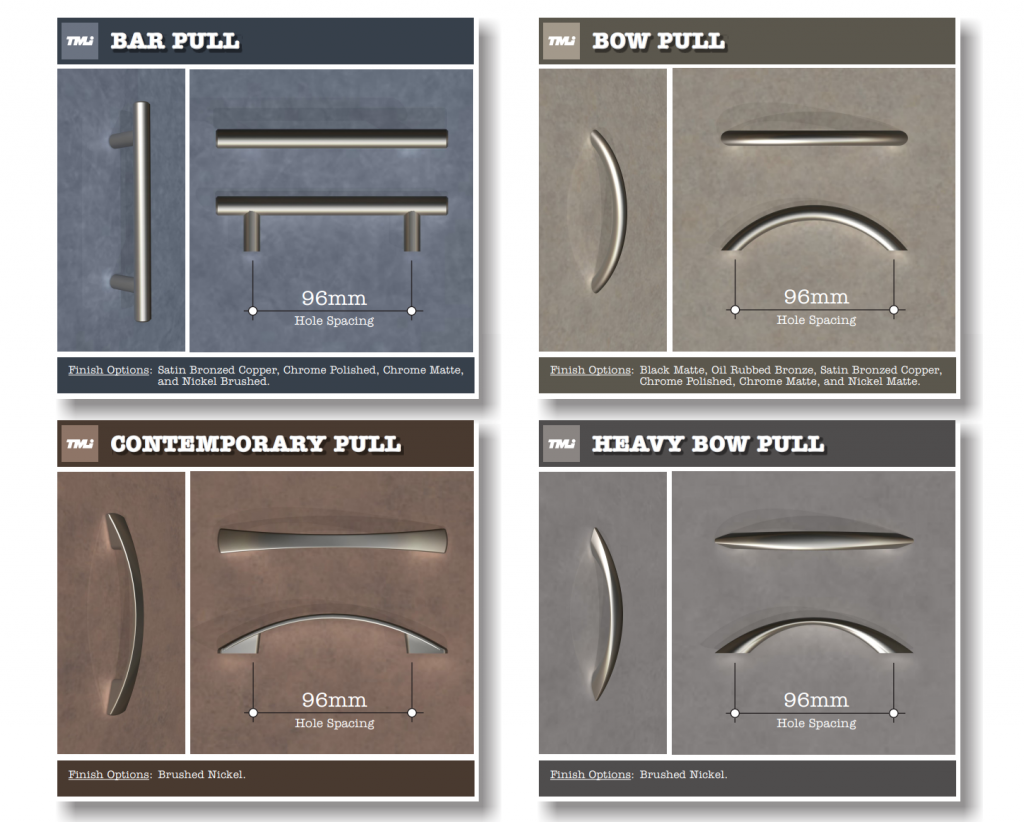
Above is a sample of the options available in TMI’s Vendor Stock Pull catalog. There are 20 design and finish options available at no additional cost, no extended lead time, and no hassle.
You can see all whole catalog of stocked cabinet pull options here.
Help Us, Help You
In Summary, the Vendor Stock program is beneficial to help designers and architects understand the parameters that can help them get casework in a timely manner. The Vendor Stock Program follows that typical 12 week lead time; however if selections are made with this program it mitigates the variable of extended lead times as well as allowing TMI to price competitively.
Understanding the parameters of TMI’s Vendor Stock program and staying within those parameters will make your projects much more likely to be completed on-time and within budget.
You can get on TMI’s website and look around to familiarize yourself with the Vendor Stock program. That way, when the time comes, you’ll be able to quickly and easily plan your materials and finishes to avoid timeline and out-of-scope cost challenges.
At the end of the day, TMI’s Vendor Stock program makes your life a lot easier.